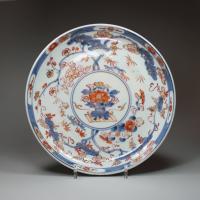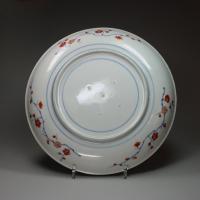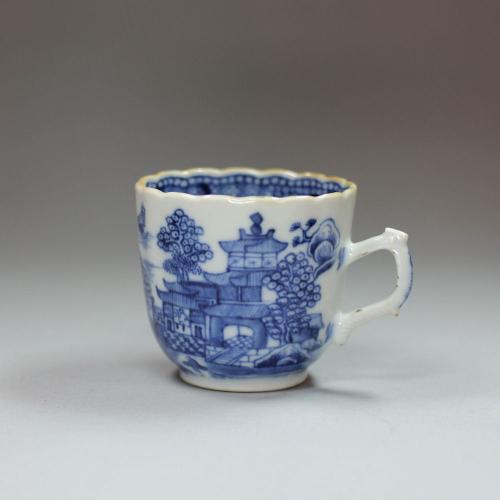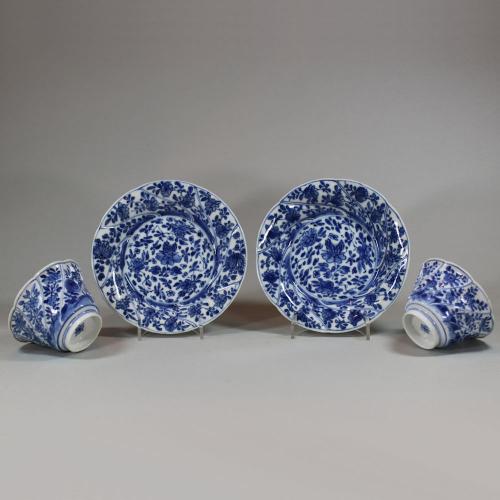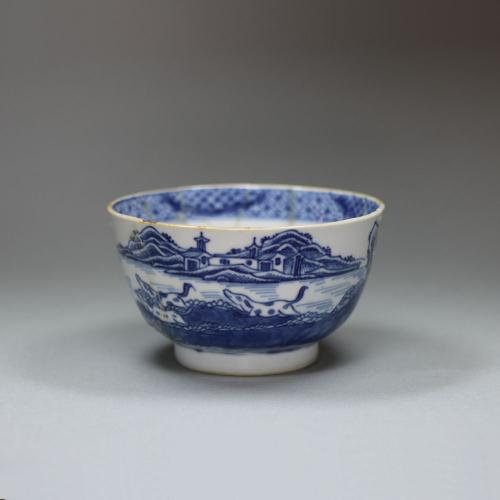
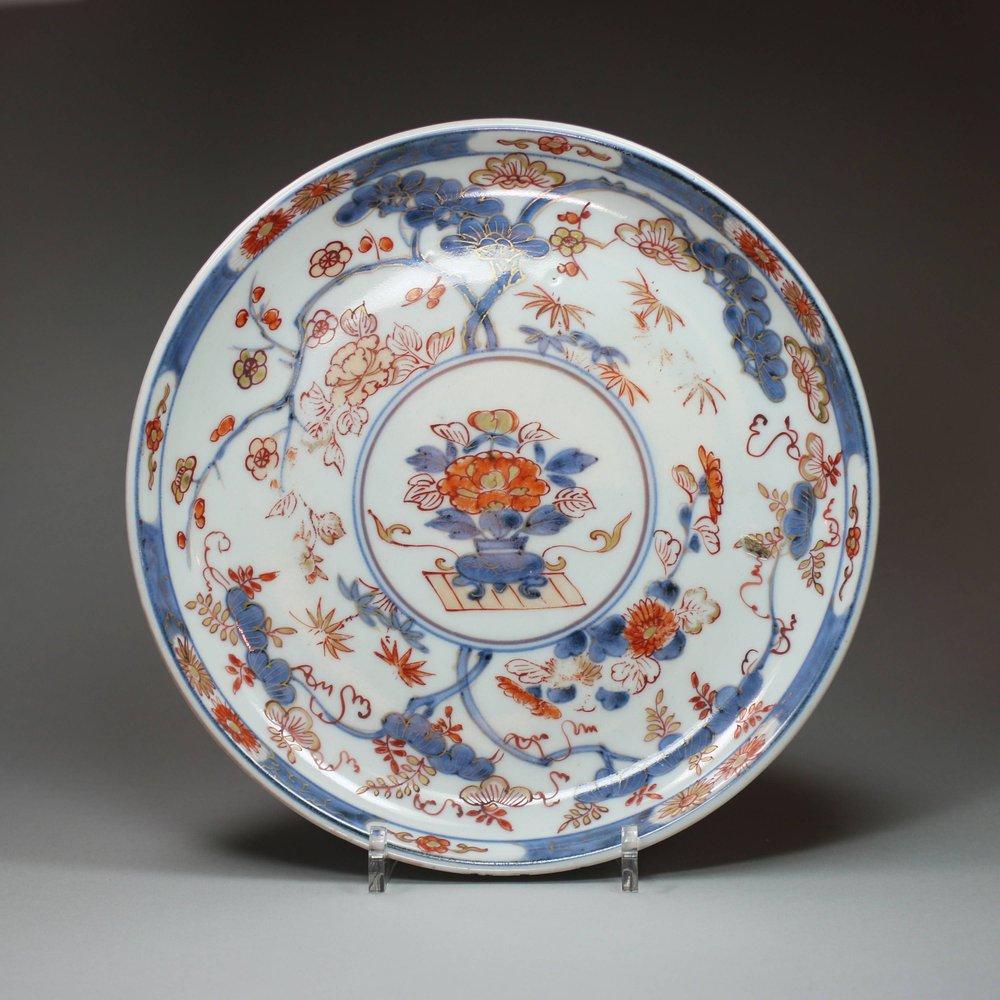
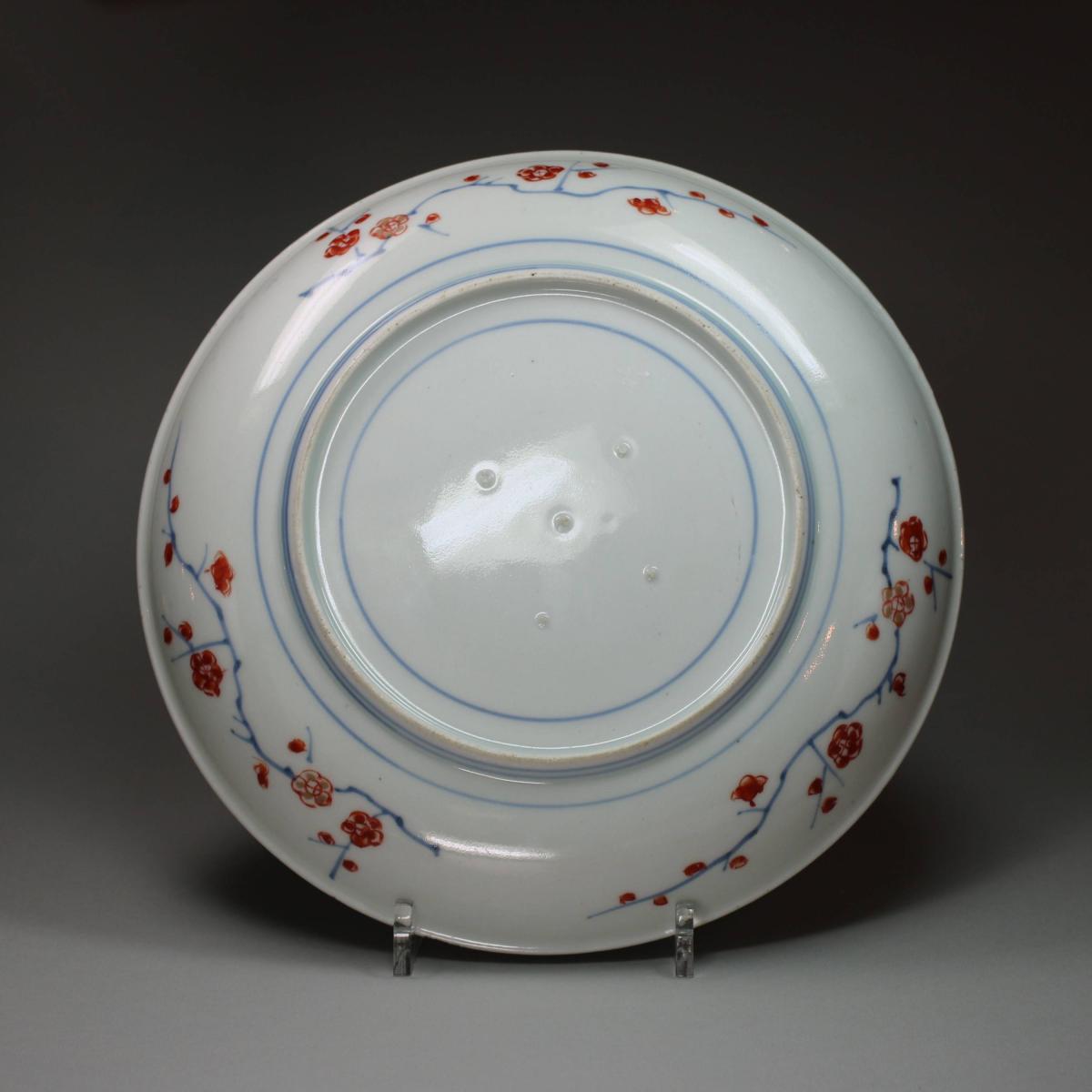
Price on application
This object is eligible for a Certificate of BADA Provenance
The BADA Standard
- Since 1918, BADA has been the leading association for the antiques and fine art trade
- Members are elected for their knowledge, integrity and quality of stock
- Our clients are protected by BADA’s code of conduct
- Our dealers’ membership is reviewed and renewed annually
- Bada.org is a non-profit site: clients deal directly with members and they pay no hidden fees
Japanese imari plate, Genroku period, c.1700, decorated in underglaze blue, overglaze enamels and gilt highlights with a central roundel containing a jardinière of foliate peony upon a wooden platform within a double circle, the cavetto with boughs of flowering prunus, chrysanthemum, peony, bamboo and paulownia; the rim with a band scrolling gilt against a blue ground with eight alternating floral cartouches, the reverse with three branches of blossoming plum, the base with concentric circles in underglaze blue and typical spur marks; diameter: 23cm. (9in.); condition: good
The flowers represented on this dish commonly appear within Japanese and Chinese design collectively to allude to the passing of time and cyclical transformation across the four seasons. Individually, too, they are symbolic. For example, bamboo represents perseverance and steadfastness through difficult times, as it does not wither and remains green and verdant during the cold, dark winter months; it is also hollow and so bends easily rather than snapping, thus is able to withstand strong winds. Meanwhile, the chrysanthemum is perhaps one of the best known flower-symbols in Japan, having been adopted as the official emblem of the Imperial Family. From ancient times it represented one of the flowers of the four seasons, and symbolised autumn while also being associated with longevity.
Dimensions
Diameter: 23cm. (9in.)Condition report
Good.Stock number
U55The BADA Standard
- Since 1918, BADA has been the leading association for the antiques and fine art trade
- Members are elected for their knowledge, integrity and quality of stock
- Our clients are protected by BADA’s code of conduct
- Our dealers’ membership is reviewed and renewed annually
- Bada.org is a non-profit site: clients deal directly with members and they pay no hidden fees


